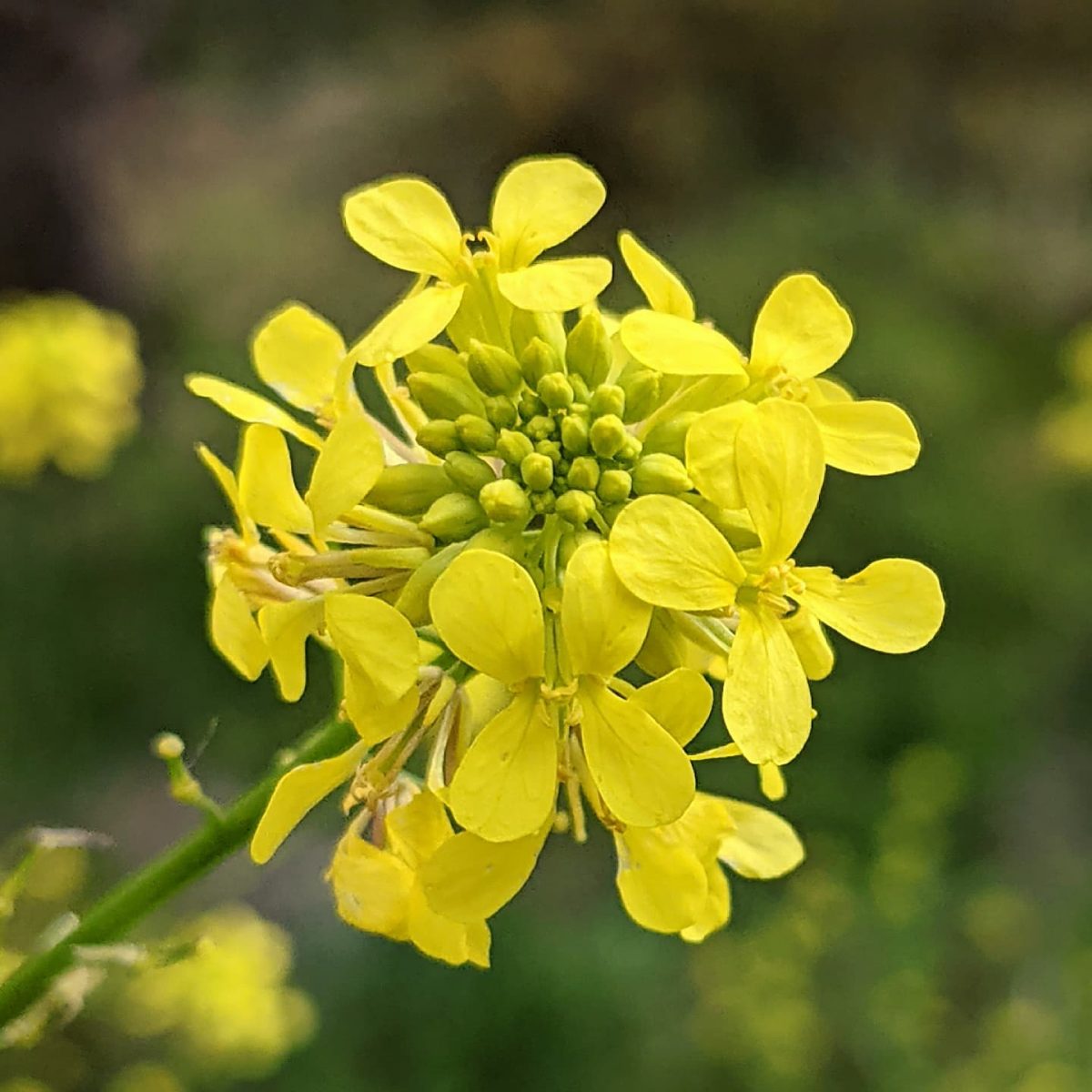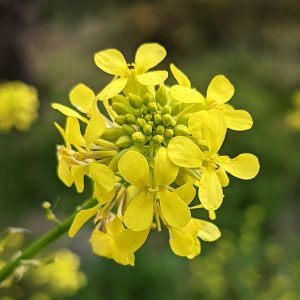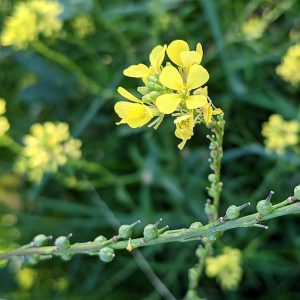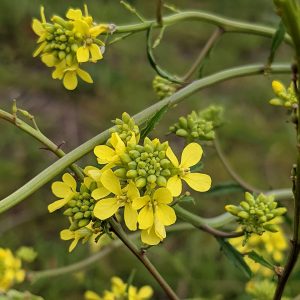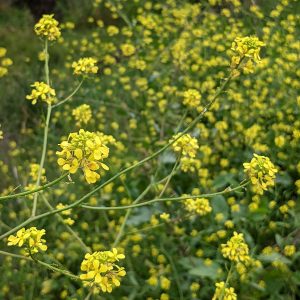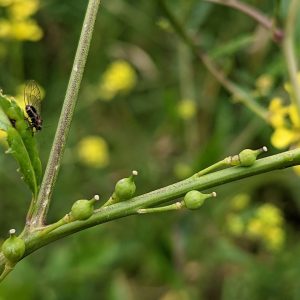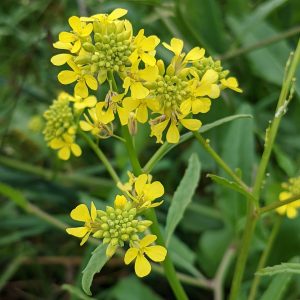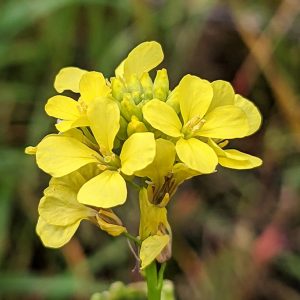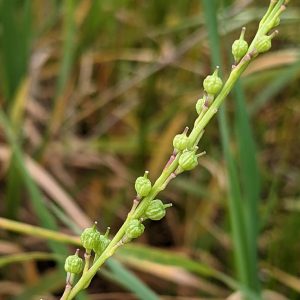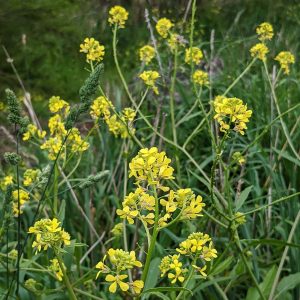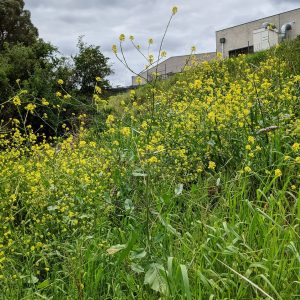Giant Mustard (Rapistrum rugosum), an upright European annual that in good conditions reaches heights of nearly 2 m.
This ‘Short-fruited Wild Turnip’ has a growth form similar to the related Wild Turnip (Brassica tournefortii), but with short, rounded seed pods and a winter-spring growth pattern. Introduced to Australia in shipments of contaminated seed, an 1880 record at Campbelltown SA precedes consistent collections from the early 1900s, as Federation was accompanied by changing patterns of agriculture and trade.
At least one 1916 writer was unusually clear-eyed in identifying the Mediterranean sources of incursion for this latest arrived mustard, drawing repeated attention to discovery of Giant Mustard seeds in consignments of Canary Seed from Italy and Morocco, and of Sheep’s Burnet from France. The species was collected on NSW’s NW Slope from 1906; in Victoria, the first record is a 1910 collection from Bacchus Marsh.
Although never as disruptive to wheat cropping as B. tournefortii (which we’ll cover when in flower), Giant Mustard’s early seed set allows it to establish an endemic presence in heavier fields, and it was occasionally noted as a troublesome weed in SA’s peninsular wheat areas.
In WA, where B. tournefortii had been extremely damaging in the 1920s and 1930s, Giant Mustard’s sudden expansion in the Midlands in the wet year of 1939 provoked alarm at the appearance of another alien mustard menacing the state’s wheat regions. That year, a colony of Giant Mustard—reportedly present at Nangetty since the late 1920s—had expanded ‘from an area of a few acres to almost five hundred,’ as good rainfall revealed that ‘from its original place of establishment… it has spread over this area, and is now along the roadsides for about ten miles’.
Like other mustards the plant can taint butter and meat, but it never established a dominant presence on grazing land that would have made it a public enemy and perennial CSIRO project. In Melbourne, it is found principally on heavier soils dampened at the edges of roads and drainages.
View Original Post on Instagram
Search for information about Rapistrum rugosum in the Flora of Victoria
View information and occurrences of Rapistrum rugosum on the Atlas of Living Australia
